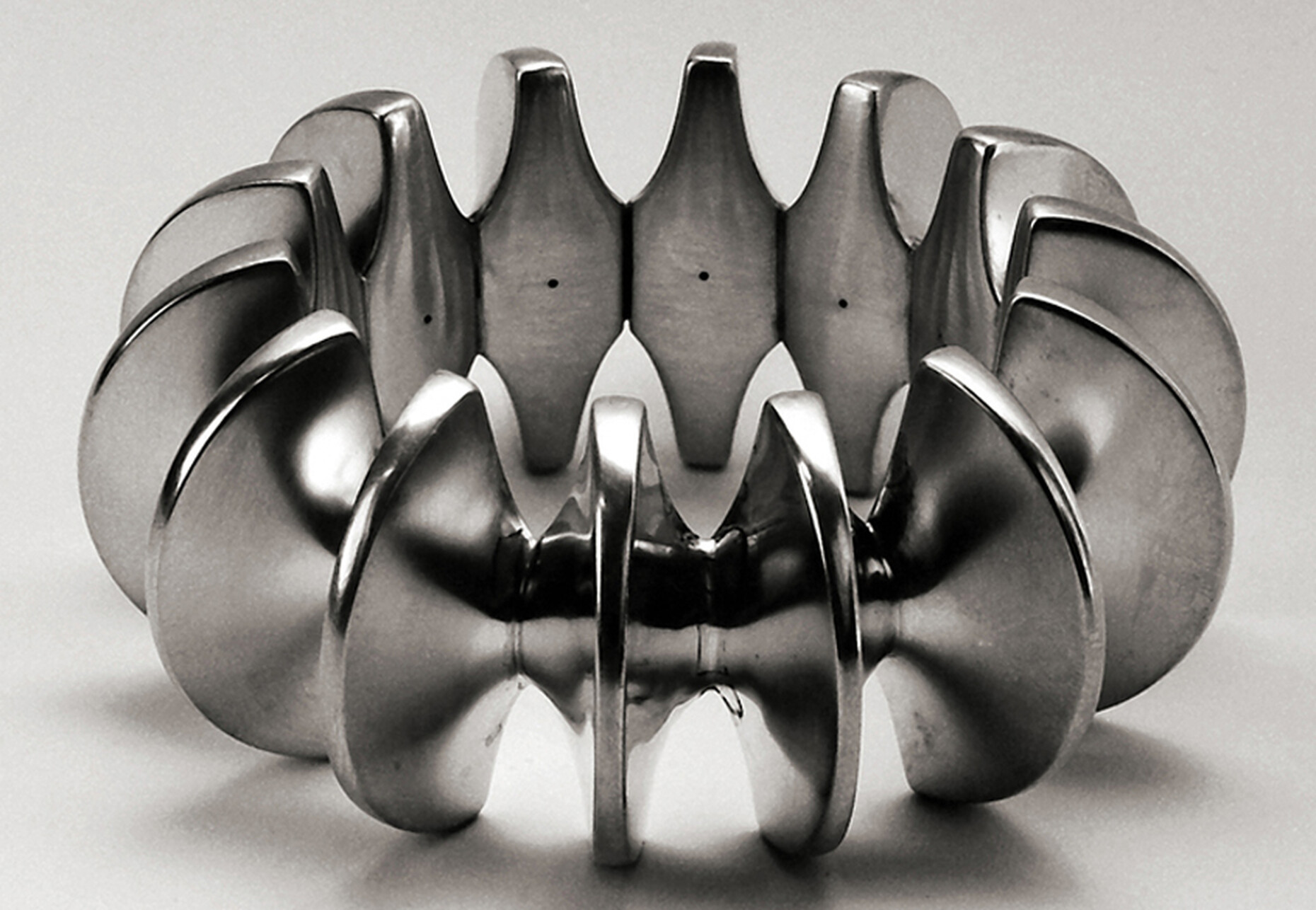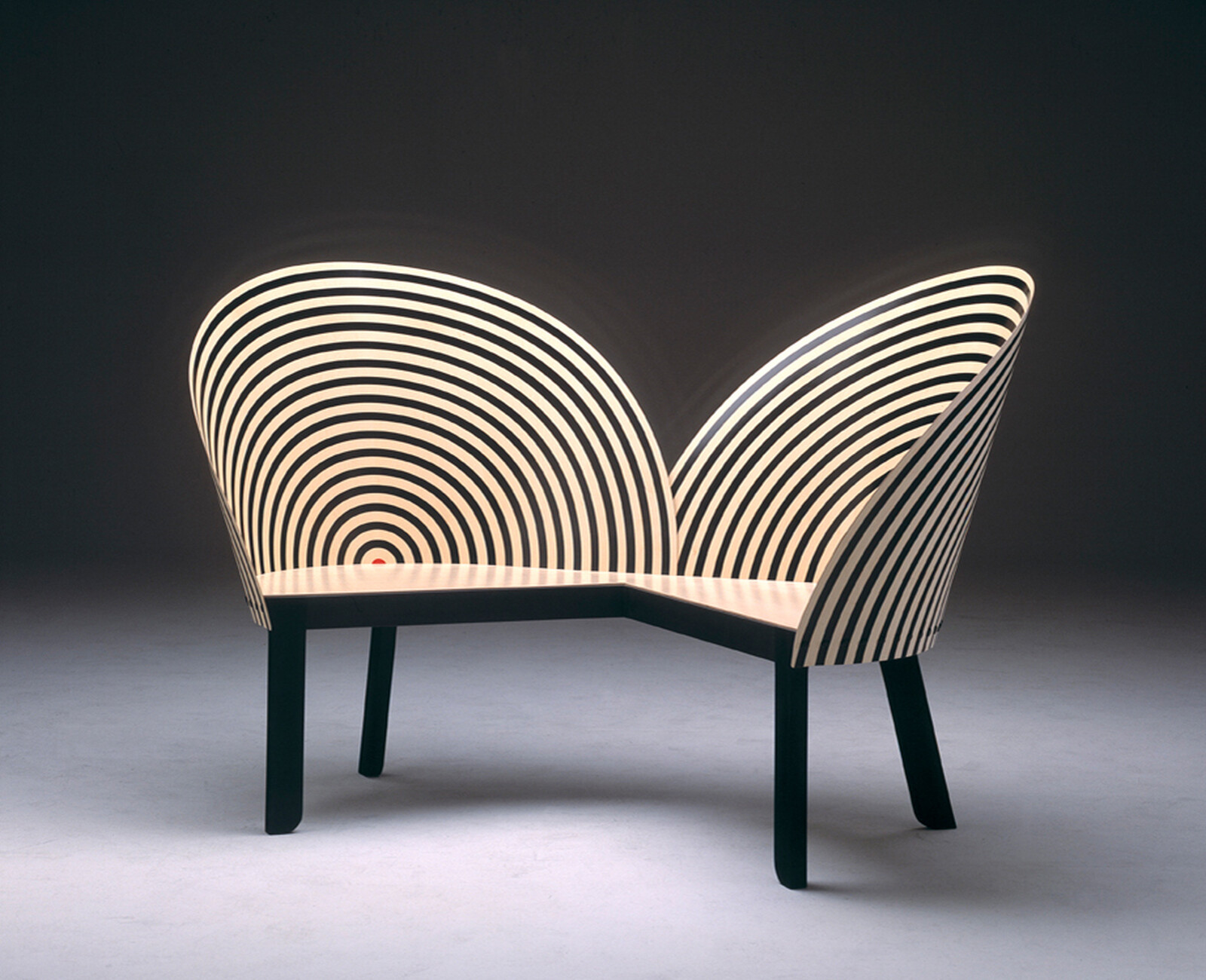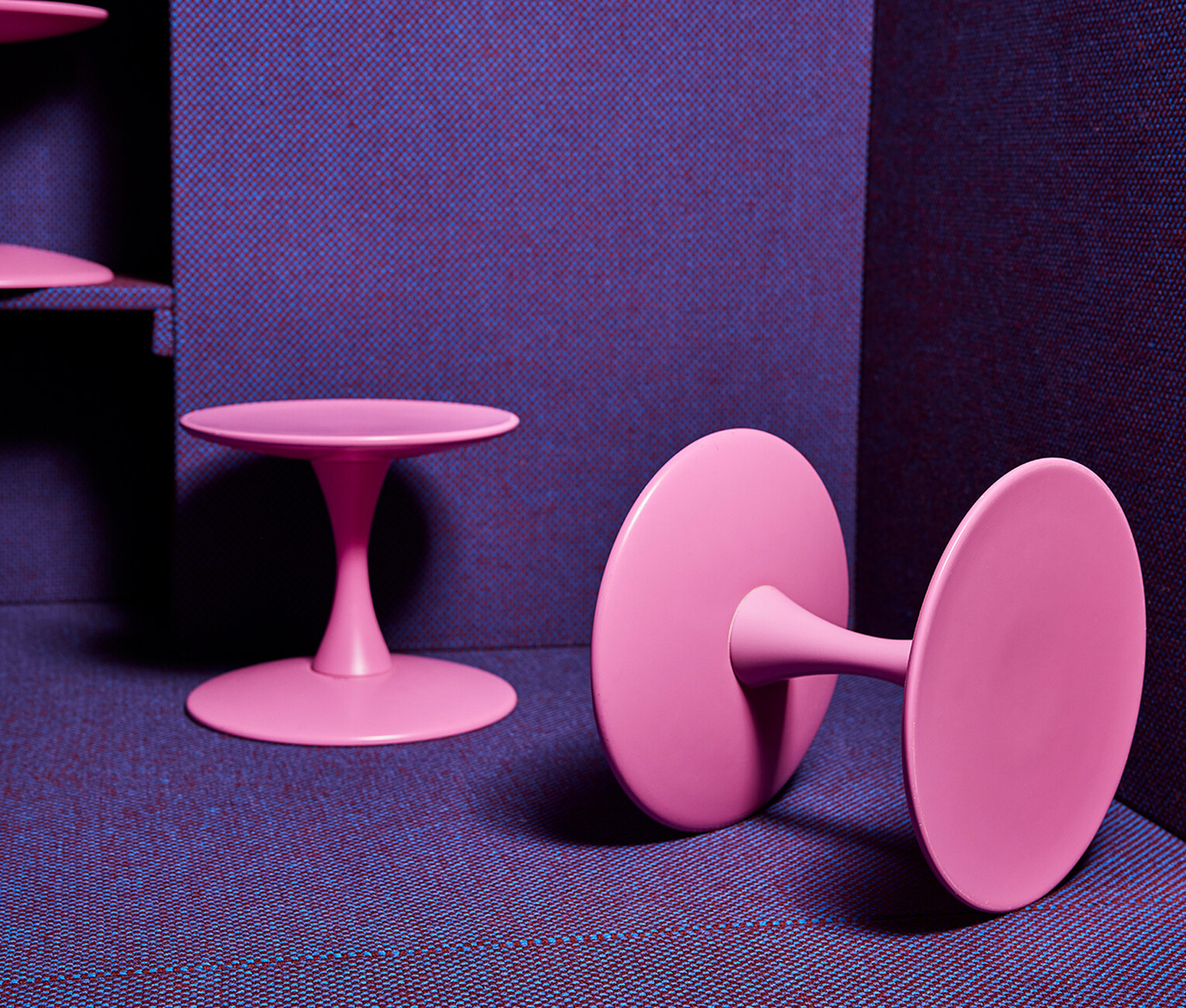Design radically
The upcoming exhibition is the first ever to show her total oeuvre. Was there a special connection between Nanna Ditzel and Trapholt?
Sara Staunsager: Yes! Celebrating her 80th birthday in 2003, Trapholt showed a permanent exhibition of Nanna Ditzel with the title Fristed (Haven). When inviting her, the museum expected a retrospective exhibition – a natural assumption given her age – but Nanna Ditzel never looked back. She wanted to make her last exhibition interesting for the media and staged her own private haven as a dark space: tinted the same midnight blue as the sky on a starry night, aware that the space would form the backdrop for a disappearance into infinity. In the exhibition, she presented inviting, confident furniture experiments characterised by optical patterns, African lines and lacework in metal. Today, all of these experiments are part of the Trapholt collection.
Take us with you on the curatorial process of the upcoming exhibition.
Sara Staunsager: It started already back in 2017, when I curated a smaller exhibition on Nanna and Jørgen Ditzels furniture designs. Danish Modern opened at Trapholt in 2018, and both guests and the press loved the exhibition and asked for more. The building of such an extensive exhibition starts with research, and my focus was on primary sources. They are necessary to ensure a solid foundation for observing Nanna Ditzel through a contemporary lens, while keeping true to her own life, words and deeds. Her daughter, Dennie Ditzel, has been on board from early on and was a great help and accommodating throughout the process. She has opened their collection for us and granted access to the family archives, including private diaries and photo albums.
So you spent a lot of time in those archives?
Sara Staunsager: A lot! Through that basework I discovered not only lesser known designs, but a person and designer who was keenly aware of the design process. From that point the concept of the exhibition grew, and her works have been curated and set in the context of this ground observation.
The exhibition is more than a mere display of Nanna Ditzel designs then?
Sara Staunsager: Far more. It sheds light on her working methods and focuses on her ability for radical thinking and creating designs with groundbreaking impact. For Nanna Ditzel, inspiration arose out of a multitude of ideas and experiences found among people or alone in nature. She was a keen observer of everything that happened around her. The exhibition will show how she worked neither with routine nor with anything that had already been done, said or happened. Nanna Ditzel’s work is characterised by the ability to work creatively, collaborate, reflect and be media aware – what we have later come to identify as 21st Century Skills. Highlighting these skills, the exhibition will especially present two of Nanna Ditzels main works, her Stairscapes and the last museum exhibition Haven as examples of how she was inspired and subsequently translated this inspiration into designs. I will curate these main cases to argue that Nanna Ditzel exhibits a special gift for collaboration and creativity and innovation. Her critical reflections and her media-conscious perspective will be recurring themes in both cases.
Nodding to the exhibition title, how did Nanna Ditzel take “design to new heights”?
Sara Staunsager: Both Nanna and her collaboration partner and later husband Jørgen Ditzel were fascinated with the idea of a free, unrestrained and less conventional way of life. By revolting against traditions and established conventions, they made radical design history. Everything was permitted, provided that it actually worked and constituted a critical, yet also media-friendly rebellion. Together they reinvented how rooms can be furnished.Their Stairscapes brought the room together as a landscape, utilised the wasted space between individual pieces of furniture and introduced a vertical dimension. It was one of the era’s first colourful sitting-lying environments where comfort is paramount; an avant-garde form of furniture that invited avant-garde forms of living and socialising. After Jørgen’s death, Nanna Ditzel continued to work with stairscapes until 2003. It was a step towards her vision – a room in which no furniture resembles what we understand by furniture today.
Where did she leave her biggest marks on Danish design and society?
Sara Staunsager: Nanna Ditzel combined solid craftsmanship with artistic and cultural inspiration. She was ahead of her time by constantly questioning issues such as gender roles, family patterns and ways of organising life. Right from an early stage she orientated herself towards alternative solutions, fluid narratives and individualised living arrangements. Her works embody the period’s break with traditional structures and coherent grand narratives, introducing a radical understanding of space and interior design and how this new way of life should be shaped. She helped form what has later been described and understood in theoretical studies as late modern society. Her visions about a future full of stairs and casual lounging have informed our contemporary interiors with their tiered terraces and large, modular sofas.
What are the challenges and the chances of curating an exhibition of such versatile exhibition pieces?
Sara Staunsager: Nanna Ditzel’s width is a challenge but also a blessing for a curator. The exhibition needed to embody the different spheres she has been designing within. One challenge is the difference in volume - from the furniture or scapes to the jewellery. They are simply experienced differently. In the stairscapes you experience social space designed so that you can immerse yourself together with others. And while enjoying the jewellery you are invited into a more intimate space, where less is more and you are experiencing the pieces individually. The stairscapes are well suited to work as an interactive space, where guests are invited to take part in the exhibition as can – not only see – but also experience what utilising the vertical dimension can do to a room.
”New things happen when you show curiosity and let yourself be inspired to challenge the status quo, drawing on diverse and surprising sources.“
Did the work or persona of Nanna Ditzel have an influence on you?
Sara Staunsager: I have brought several pieces of furniture and ideas into my own home and even introduced some stairs to the interior mix. As a curator and a design historian in Denmark, we are full of veneration for the modern masters. For me, putting some of the more radical designers such as Nanna Ditzel at the top of the poster feels more pertinent. When exploring Nanna Ditzel’s design, you realise that the new cannot arise when you mindlessly repeat the known. New things happen when you show curiosity and let yourself be inspired to challenge the status quo, drawing on diverse and surprising sources. To me, she remains a role model.
If you could travel back in time and ask Nanna Ditzel one question, what would that be?
Sara Staunsager: As she was a keen observer of the current design landscape, I would have loved to hear her analysis of the different movements we see in the field at the moment. But then again, who would pose that as a question to somebody? I would probably end up commenting on the weather and pose it as a question? What a waste.
Nanna Ditzel – Taking Design to New Heights
28.9.2023 to 11.8.2024
Trapholt Museum for Moderne Kunst og Design
Æblehaven 23
6000 Kolding
Opening hours
Tuesday to Sunday: 10 a.m. to 5 p.m.
Wednesday: 10 a.m. to 9 p.m.
Monday closed
















